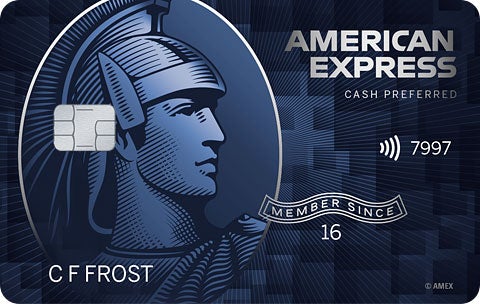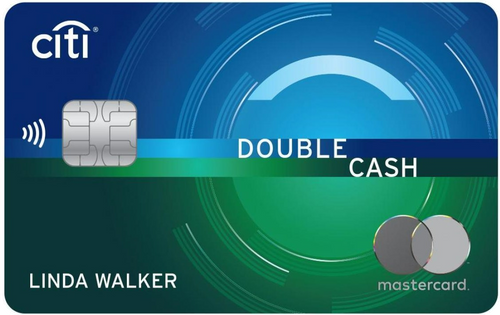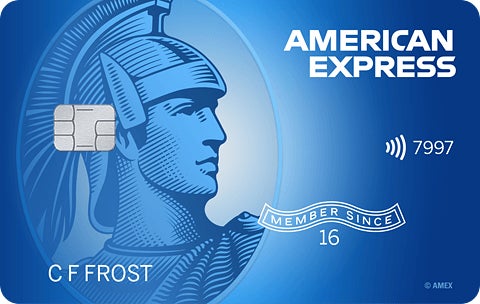Citi is an advertising partner.
The Blue Cash Preferred® Card from American Express* and the Citi Double Cash® Card are both cash rewards cards, but they cater to different credit score ranges. The Blue Cash Preferred is recommended for people with good to excellent credit, while the Double Cash is recommended for people with fair to excellent credit. The Blue Cash Preferred Card is the standout card since it lets you earn higher rewards in more common spending categories and overall lower fees.
While the Citi Double Cash Card has fewer frills and less favorable rewards than the Blue Cash Preferred Card, its simplicity may make it the right fit if you’re looking for a no-annual-fee card that earns flat-rate rewards.
Here’s what you need to know about the Blue Cash Preferred and Citi Double Cash to decide which card will work best for you.
Comparing annual fees
- $0 intro annual fee for the first year, then $95.
- $0
The Blue Cash Preferred Card has a $0 intro annual fee for the first year, then charges a $95 annual fee after that. The Citi Double Cash Card, however, has no annual fee. Although the Blue Cash Preferred Card’s annual fee is much lower than many other similar reward cards, we like that the Citi Double Cash lets you earn predictable rewards without an annual fee.
Rewards
- 6% Cash Back at U.S. supermarkets on up to $6,000 per year in purchases (then 1%)
- 6% Cash Back on select U.S. streaming subscriptions
- 3% Cash Back on transit including taxis/rideshare, parking, tolls, trains, buses and more
- 3% Cash Back at U.S. gas stations
- 1% Cash Back on other purchases
- Plus, for a limited time, earn 5% total cash back on hotel, car rentals and attractions booked on the Citi Travel℠ portal through 12/31/24.
- Earn 2% on every purchase with unlimited 1% cash back when you buy, plus an additional 1% as you pay for those purchases. To earn cash back, pay at least the minimum due on time.
*For the Blue Cash Preferred, cash back is received in the form of Reward Dollars that can be redeemed as a statement credit.
The reward programs for each of these cards are quite different. The Blue Cash Preferred offers a variety of cash rewards that cater to different spending categories. Meanwhile, the Double Cash has a much simpler approach: one straight rewards rate for general purchases, without spending limits.
While the Citi Double Cash Card has a straightforward cash-back rate that’s worth 2% for general purchases (1% when you make the purchase and 1% when you pay your bill), the Blue Cash Preferred Card offers much more lucrative rewards rates in categories like groceries (at eligible U.S. supermarkets) and U.S. gas stations, which can offer a higher return on your dollar.
For example, if you spend $5,000 a year at U.S. supermarkets, you could earn up to $300 in rewards with the Blue Cash Preferred. With the Citi Double Cash, you’d earn up to only $100 for this category. And that’s just for eligible grocery purchases.
Overall, the Blue Cash Preferred is likely to bring in more rewards than the Citi Double Cash -- however, if you don’t want to think about spending categories or don’t spend a lot on groceries, gas, transit or streaming services, then the Citi Double Cash might make more sense.
Welcome offer
- Earn a $250 statement credit after you spend $3,000 in purchases on your new Card within the first six months.
- Earn $200 cash back after you spend $1,500 on purchases in the first six months of account opening. This bonus offer will be fulfilled as 20,000 ThankYou® Points, which can be redeemed for $200 cash back.
The battle between these two cards for the best welcome bonus is won by the Citi Double Cash. Despite the Blue Cash Preferred’s welcome offer providing a larger payout (by $50), it also takes double the spending to qualify.
For perspective, you’d need to spend $500 each month to qualify for the Blue Cash Preferred’s welcome offer and $250 monthly for the Double Cash. That means the Citi Double Cash has a higher payout compared with its spending threshold than the Blue Cash Preferred.
Intro APR
- 0% introductory APR on purchases and balance transfers for 12 months from the date of account opening (then 19.24% to 29.99% variable).
- 0% introductory APR on balance transfers for 18 months (19.24% to 29.24% variable APR thereafter).
An introductory APR offers cardholders a lower interest rate for a period of time when first opening the card. Both of these cards offer 0% introductory APR periods, which can help you potentially avoid interest if you transfer a balance from another credit card to pay down your debt.
The Blue Cash Preferred Card offers a 0% introductory APR on balance transfers and purchases for the first 12 months from the date of account opening (then 19.24% to 29.99% variable APR). The Citi Double Cash Card gives its new cardholders a 0% introductory APR for the first 18 months of having the card, but it applies only to balance transfers and not new purchases (19.24% to 29.24% variable APR thereafter; balance transfers must be completed within four months of account opening).
Although the Blue Cash Preferred offers a 0% introductory period for balance transfers and new purchases, we like that the Double Cash has a longer introductory 0% balance transfer period, which can help you pay down existing high-interest credit card debt. For this reason, we’re not declaring a winner in this category -- they both offer good introductory rates, but which one is better for you depends on whether you want to finance a new purchase or existing credit card debt.
Other fees
- Balance transfer fee: $5 or 3% of the transaction amount, whichever is greater
- Cash advance fee: $10 or 5% of the cash advance amount, whichever is greater (see rates and fees)
- Foreign purchase transaction fee: 2.7% of the transaction amount after converted to U.S. dollars (see rates and fees)
- Late payment fee: Up to $40 (see rates and fees)
- Balance transfer fee: Intro fee of 3% of each transfer (minimum $5) completed within the first four months of account opening. A balance transfer fee of 5% of each transfer ($5 minimum) applies if completed after four months of account opening.
- Cash advance fee: Either $10 or 5% of the cash advance, whichever is greater
- Foreign purchase transaction fee: 3% of the transaction amount after converted to U.S. dollars
- Late payment fee: Up to $41
Both cards offer similar additional fees, like balance transfer, cash advance and late payment fees. However, the Blue Cash Preferred Card offers a slightly lower foreign transaction fee and doesn’t increase its balance transfer fee four months into account ownership like the Double Cash. The Blue Cash also has a slightly -- albeit $1 -- lower late payment fee.
How Blue Cash Preferred® Card from American Express and Citi Double Cash® Card compare to other cards
The bottom line
The Blue Cash Preferred Card will offer more value than the Citi Double Cash card for most people. It comes with substantially higher rewards rates in top spending categories, the option to either transfer a balance or fund a new purchase with an introductory APR period and slightly lower additional fees. However, it does also come with a $95 annual fee that kicks in after your first year ($0 intro annual fee for the first year).
If you don’t spend much on groceries or gas purchases to get enough value out of the Blue Cash Preferred, then the no annual fee, flat-rate Double Cash could offer a more straightforward way to earn rewards without worrying about spending categories or thresholds. It also has the better welcome offer.
Both cards can help you earn rewards on everyday purchases. Which card is best for you will depend on how you spend your money and whether you can earn enough with the Blue Cash Preferred to justify the annual fee.
FAQs
No, cash rewards aren’t free money. You must spend money to earn cash rewards with a cash rewards credit card. However, if you use a credit card to make purchases you have already planned, a cash rewards card can be a smart way to earn rewards on pre-planned spending.
Some credit cards offer an introductory or welcome offer when you open a new account. Credit card welcome offers typically require that you spend a certain amount of money on the credit card within a certain amount of time to earn the offer. Some, like Amazon’s Prime Visa, don’t require anything other than account approval to earn to earn the offer.
When you transfer a balance from one credit card to another, you’ll typically pay for it unless the card doesn’t charge a balance transfer fee. Balance transfer fees range from 3% to 5% of the transferred balance. And while paying more might sound inconvenient, credit cards that charge a balance transfer fee typically offer a longer promotional period than ones that don’t.
For rates and fees of the Blue Cash Preferred Card from American Express, click here.
*All information about the Blue Cash Everyday Card from American Express and the Blue Cash Preferred Card from American Express has been collected independently by CNET and has not been reviewed by the issuer.
The editorial content on this page is based solely on objective, independent assessments by our writers and is not influenced by advertising or partnerships. It has not been provided or commissioned by any third party. However, we may receive compensation when you click on links to products or services offered by our partners.



